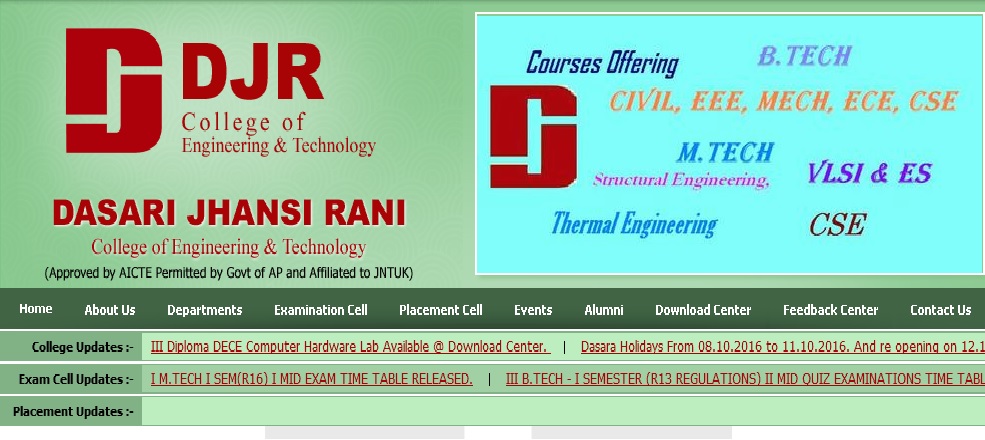EC1211 Electronic Devices B.E Question Bank : niceindia.com
Name of the College : Noorul Islam College of Engineering
University : Anna University
Degree : B.E
Department : Electronics and Instrumentation Engineering
Subject Code/Name : EC 1211 – Electronic Devices
Document Type : Question Bank
Website : niceindia.com
Download Model/Sample Question Paper :https://www.pdfquestion.in/uploads/niceindia.com/3017-EC_1211_ELECTRON_DEVICES.pdf
NICE Electronic Devices Question Bank
Unit-I
1. Define Electronics :
The branch of engineering which deals with conduction of current through vacuum or gas or a semiconductor.
Related : Noorul Islam College of Engineering ME1008 Robotics B.E Question Bank : www.pdfquestion.in/3024.html
2. Define Semiconductor :
Semiconductor is a substance has its resistivity in between conductors and insulators. E.g. silicon, Germanium.
3. Define Conductor :
The substances, which allow electric current to pass through them, are called conductors. E.g. Copper.
4. Define Insulator :
Material, which does not allow the passage of electric current through them.E.g. Glass, wood, etc.
5. Define Energy band diagram :
It is diagram drawn between inter atomic spacing along the X-axis and the band energy along the Y-axis.

6. What are free electrons :
The valence electrons, which are very loosely attached to the nucleus, are known as free electrons.
7. Define doping :
The process of adding impurities to an intrinsic semiconductor is called doping.
8. Define Intrinsic semiconductor :
Semiconductor in an extremely pure form is called intrinsic semiconductor. Its valence shell must be tetravalent in nature.
9. Define Extrinsic semiconductor :
Semiconductor in an impure form is called extrinsic semiconductor. They are two types (i), P-type (ii), N-type.
10. Define valence band :
The range of energy possessed by valence electron in an atom is called Valence band.
11. Define Conduction band :
The range of energy possessed by conduction electron in an atom is called conduction band.
12. Explain forbidden energy gap :
The separation between the conduction band and the valence band on the energy band diagram.
13. Define P-N junction :
When P-type and N-type are suitably joined together by the conducting surfaces of these two semiconductors is called P-N junction.
14 Define forward biasing :
When a diode is forward biased the current is produced because the holes in the P-region and electron from N-region moves towards the junction. The depletion region formed will be very small hence recombination occurs and current will be produced.
15. Define reverse biasing :
When a reverse biased voltage is given an electron from N-region and holes from P-region moves away from the junction,hence the depletion region formed is very high and hence a small current will be produced due to minority carriers.
16. Define reverse resistance :
The resistance offered by the diode in its reversed biased condition is called reverse resistance.
17. Define forward resistance :
The resistance offered by the diode in its forward biased condition when a voltage is given is called forward resistance.
18. Define transition capacitance :
The P-N region on either of the dielectric media act as the plates hence we have components for making a plate capacitor the junction capacitance is called transition capacitance.
19. Define power rating :
The power rating of a diode is defined as the maximum value of power that can be dissipated without failure if Vf is the forward biased voltage and If is the forward biased current. Pd= Vf x If.
20. Define diffusion capacitance :
This capacitance effect is present when the junction is forward biased it is called diffusion capacitance.
UNIT-II
1) What is a FET?
a. A field effect transistor is a three terminal semiconductor device in which current conduction is by one type of carriers (either electrons or holes) and is controlled by an electric field.
2) Which device is called as unipolar device? Why?
i. Since the operation of FET depends upon the flow of majority carriers (either the electrons or holes) only, the FET is said to be unipolar device.
3) What are the main drawbacks in BJT?
i. The main two drawbacks in BJT are
ii. Low input impedance
iii. Considerable noise level.
4) What is pinch off voltage?
i. Drain source voltage above which the drain current become constant is known as pinch off voltage. The point N is called as pinch off point. Above the pinch off voltage the channel width becomes narrow and drain current remains constant.
5) What are advantages of FET?
i. It is a voltage control, constant current driven device that is the variation in input voltage controls the output current.
ii. The input impedance is very high so it allows a high degree of isolation between the input and the output circuit.
iii. The carriers are not crossing the junction hence the noise is highly reduced.
iv. It has a negative temperature co-efficient of resistance. This can avoid thermal runaway.
UNIT-III
1. What is luminescence ?
Light can be emitted from a solid when it is stimulated by source of incident energy This is known as luminescence
2. What is photo luminescence?
If the incident energy is in the form of photon then it is called photo luminescence
3. What is electro luminescence?
If the radiation is produced by the application of an electric field then it is called as electro luminescence
4. What is photo electric emission?
When a photon of light strike on the metal surface it may transfer enough energy to the electrons at the surface of the metal to escape from the surface this called as photo electric emission
5. What is photo conductive effect?
It means that the conductivity of a semiconductor depends on light intensity falling on it